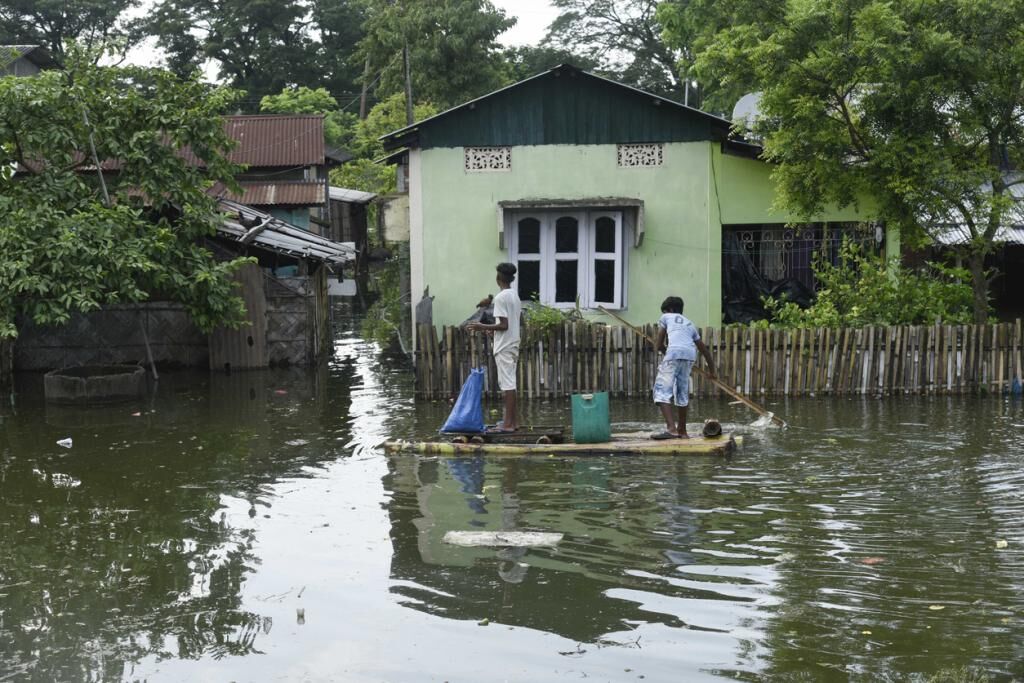A laggard approach
Ironically, as the number of people affected by Assam floods has touched a record high, the state allocation for control measures has dipped

Assam is flooded almost every year and this year, more than 4.8 million lives have been affected in 34 of its 35 districts as of June 19, 2022, official records showed.
The crisis, however, isn't reflected in the state's budgetary allocation for flood control, which has dipped since the financial year 2019-20. The eastern state had set aside Rs 3,748 crore for agriculture and flood control in the budget for the financial year 2019-20. This was reduced to Rs 2,825 crore for 2020-21, Rs 2,452 for 2021-22 and Rs 2,778 for 2022-23, according to the budget documents.
Apart from irrigation and flood control measures, the Assam state budget does not have a specific allotment for relief measures in the face of a calamity. It cannot have an allotment without the Finance Commission's suggestion.
At the same time, the average number of people affected by floods annually has also steadily increased in the state, according to the Government of Assam's water resources department.
From 1970-1979, two million people were affected by floods and, from 1998 to 2005, the number of people affected by floods annually rose to 4.5 million. In 2020, more than six million people were affected.
In the last two months, 3,29,759 people were shifted to relief camps and 1,99,438 hectares of total cropland was damaged, according to Ravindranath, founder of Rural Volunteers Centre — a grassroot-level organisation in North East India — and former Ashoka fellow. He has worked for years to uplift flood-affected areas in Assam.
Compensation is a common grievance in Assam, he added.
The state's revenue department handles the relief measures, according to the expert. Separate mechanisms outside the state budget funding such as the State Disaster Response Fund and National Disaster Response Fund were established on the proposal of the 13th Finance Commission under the Union Ministry of Finance.
The state budget does, however, offer financial support for long-term climate adaptation projects. The Brahmaputra Flood Control Project, for instance, was allocated Rs 694 crore for 2020-21. The Assam State Disaster Management Authority too received a capacity building grant.
The National Policy of Floods also offers funding based on immediate, short-term and long-term requirements.
This year, the eastern state experienced intense pre-monsoon rainfall, according to the India Meteorological Department (IMD). These early showers, likely driven by climate change, may be behind the devastating floods, said experts.
It is not clear if these floods will become a year-round phenomenon, but human activity such as mining may dictate the outcome, said Ravindranath. Sedimentary rock structures can deposit on the riverbed and increase the volume of water, he explained.
The disaster management authorities and National Disaster Response Force have responded to flood warnings promptly, he added.
In the past, there was no system in place and local communities would band together for protection against floods, he recollected. The resident of upper Assam said citizens would warn each other on witnessing the rise in river water in the lower basins. DTE
Views expressed are personal



